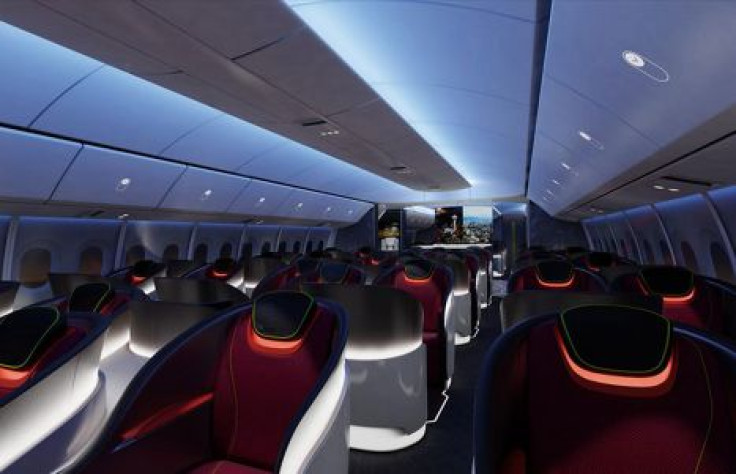Farnborough Airshow 2014: Boeing Announces Robotic Manufacturing, New Interior For 777X Jet

The Boeing Company (NYSE:BA) announced at the Farnborough Air Show on Tuesday that it will use robots in the manufacturing of some of its aircraft, raising questions about the long-term future of some of its staff.
Noting the robots will be used to join the fuselage panels on 777 and 777X aircraft, Boeing said the move will increase speed, quality and safety. The company also pointed to current use of robots in the 737 production process: Robots have been painting wings since 2013, and they will soon be deployed to assemble them.
The shift to robotic manufacturing comes amid a major increase in customer demand from the soaring Asian airline industry, particularly from airlines based in the Middle East. The Boeing 787, for example, will be produced at a rate of 14 per month (vs. 10 per month currently) starting in 2018. It’s also likely that Boeing will increase production of the 777X in the coming years to meet the new demand.
Boeing has admitted that staffers have bristled at the prospect of being replaced by robots, but Boeing spokesperson Doug Alder said that those affected by the introduction of robots will be moved to other positions in the production process. According to Boeing's own numbers, its Commercial Airplanes division employed more than 83,000 people as of the end of June.
Boeing also announced at the southern England airshow that it would adopt many of the key passenger-friendly aspects of its 787 Dreamliner for its new 777X jet, a larger version of its current 777.
In addition to introducing a lower effective cabin pressure, cleaner air, and higher ceilings, Boeing also announced that robots will be used to manufacture some fuselage parts for the 777 and the 777X, due to begin deliveries to airlines in 2020.
The changes are taken from features that were included in new interior designs for the smaller 787-8 and the new 787-9. They include larger windows, an advanced air-filtration system, large-capacity overhead bins, and a 16-inch increase in overall cabin width that enables larger economy-class seats.
"One thing we learned from the 787 is the amazing passenger experience,” said Scott Fancher, Boeing's senior vice president of airplane development, at the Farnborough Airshow. “The cabin altitude, the cleanliness, the openness and airiness of the interior. We've learned from it and replicated it in the 777X.”
The first day of the biennial Farnborough Airshow on Monday saw customers make orders and commitments worth over $40 billion, said show organizers in a statement.
The figure is three times as much as the show yielded on the first day in 2012, but it falls far short of the $192 billion splashed on the first day of the Dubai Airshow in November 2013, when the Boeing 777X was unveiled and alone generated more than $100 billion worth of orders.
While none of the big airlines have publicly announced purchases at Farnborough yet, Air Lease Corp. said Tuesday that it had ordered six 777-300ER (extended-range) jets. This comes on the heels of last week’s news that Emirates confirmed its Dubai airshow order for 150 Boeing 777X jets for $56 billion.
The list price for the 777-8X and the 777-9X are $350 million and $377 million, respectively.
The Farnborough Air Show will run from July 14-20.
© Copyright IBTimes 2024. All rights reserved.












